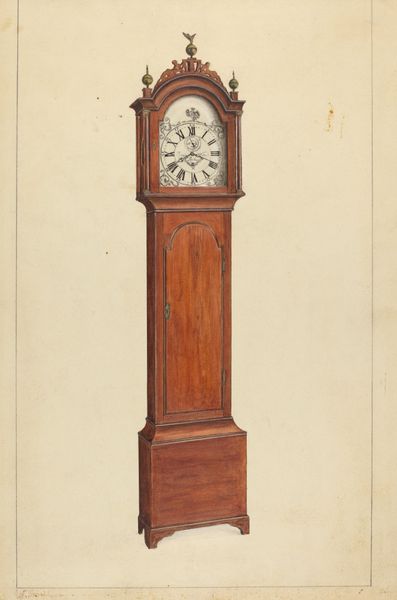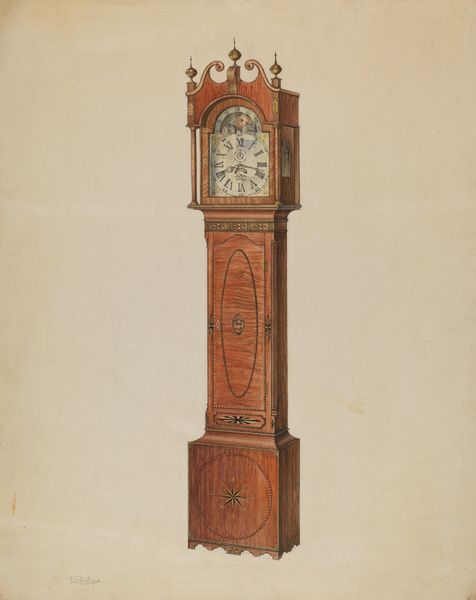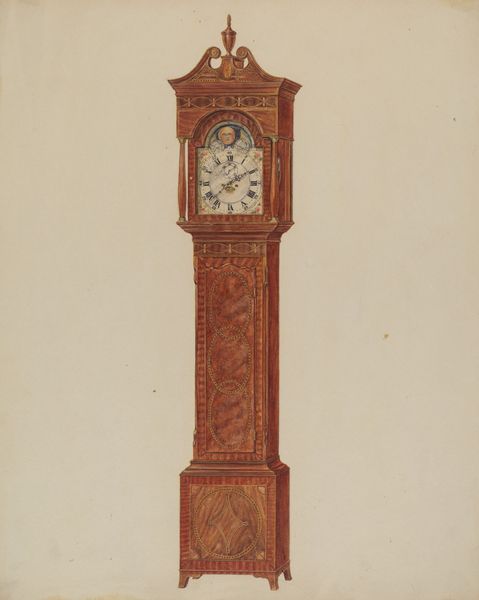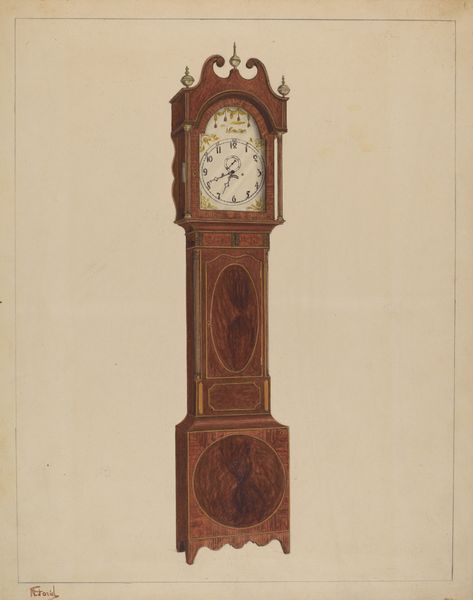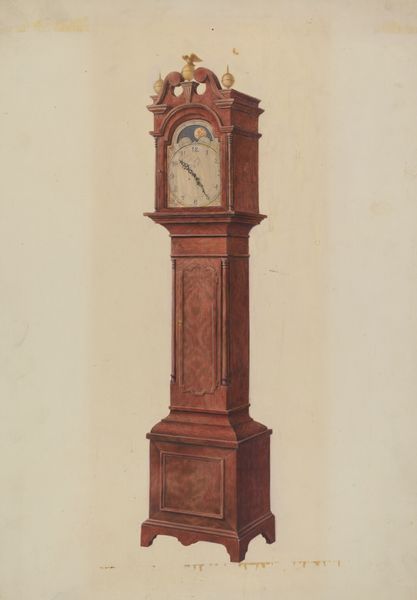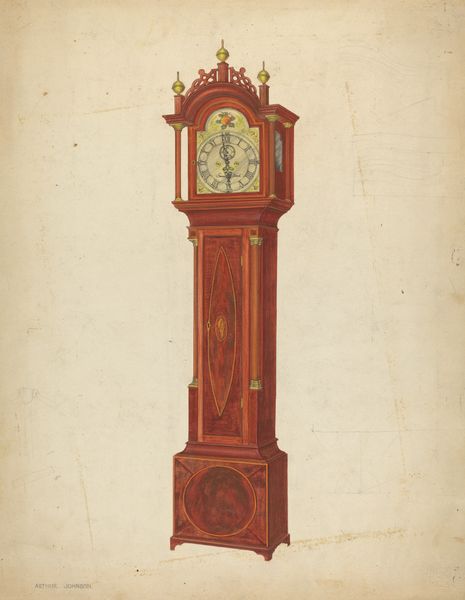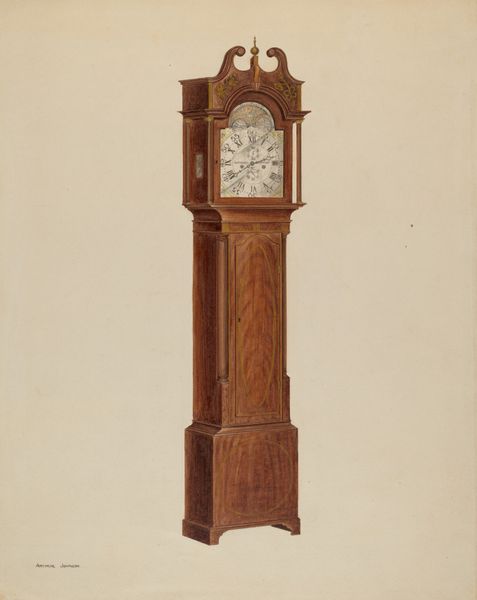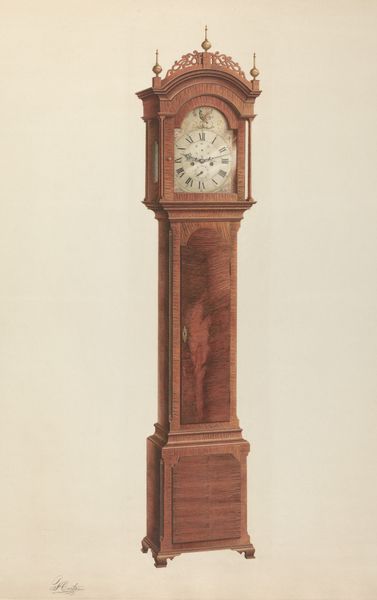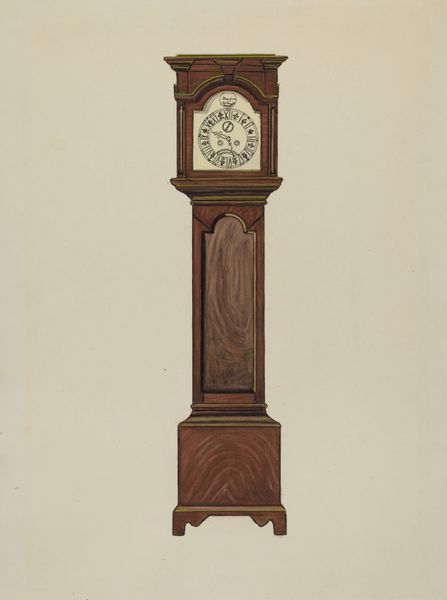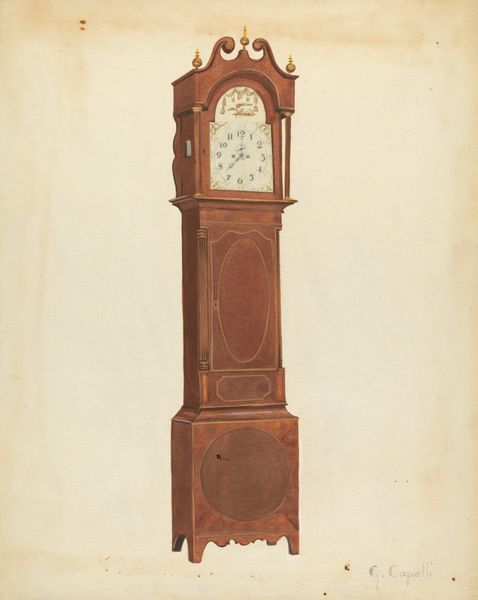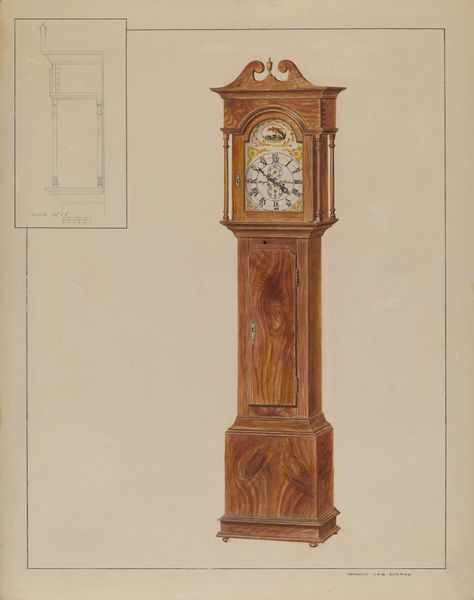
drawing, coloured-pencil, paper
#
drawing
#
coloured-pencil
#
paper
#
coloured pencil
Dimensions: overall: 43.6 x 26.6 cm (17 3/16 x 10 1/2 in.) Original IAD Object: 8 1/2" x 21"
Copyright: National Gallery of Art: CC0 1.0
Editor: This is Theodore Pfitzer's "Hall Clock (Grandfather's Clock)", made around 1937 with colored pencils on paper. I'm struck by how meticulously rendered it is. What do you make of this drawing? Curator: As a materialist, my eye is drawn to the depiction of this everyday object using colored pencil. What does it mean to represent a piece of furniture, likely mass-produced, with such detailed, almost craft-like attention? Is Pfitzer elevating the mundane to the level of art, or commenting on the blurred lines between industry and handcrafted goods during this period? Editor: That's a great point. I hadn’t considered the tension between the clock as a functional object and the drawing as art. Do you see a connection between the materials used and the message of the work? Curator: Absolutely. The choice of colored pencil, often associated with domestic crafts and childhood art, infuses the image with a sense of intimacy. Consider how it affects our perception of time and labor. Is the act of meticulously drawing a clock a meditation on time itself, and how objects mediate our relationship with it? How would the interpretation change if it were painted? Editor: Interesting. Maybe the use of colored pencil emphasizes the hand-made aspect of even mass-produced objects and questions divisions between art and craft. Curator: Precisely! This brings to mind the role of drawing and sketching within industrial design at that time. Was Pfitzer, perhaps, engaged in visualizing designs that were to be manufactured? This image pushes us to contemplate drawing as a means of production rather than a fine art. Editor: I'm now viewing this simple depiction of a clock as much more than a quaint drawing. The drawing highlights the intricate relationship between material and industrial practices. Curator: Exactly! By scrutinizing its production, material, and place within a consumer society, it pushes us to consider art outside conventional aesthetic boundaries.
Comments
No comments
Be the first to comment and join the conversation on the ultimate creative platform.
